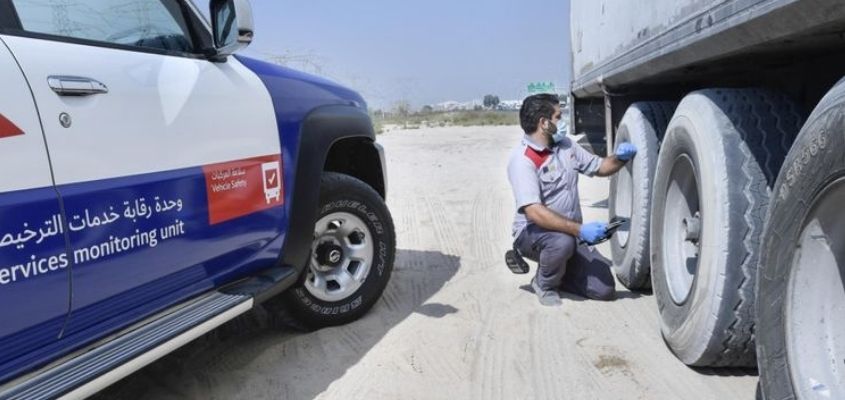Blog
BACK TO BLOG
After a month-long marketing campaign regarding the security of tires by RTA, they concluded that tires with more than 5 years of utilization are not allowed to be on UAE roads. Roads and Transport Authority (RTA) made sure to remind the motorist about this after their month-long inspection of vehicles on Dubai roads.
Subject groups from RTA’s Licensing Actions Monitoring Division on the Licensing Company stated that they had undergone a total of 7353 automobiles and issued 128 offense tickets. 55 out of those were automobiles that belonged to driving institutes and had great quality tires. Further re-inspecting 3574 automobiles confirmed the compliance with the automobiles licensing as well as the condition of their tires in general. These automobiles were unable to cross the technical checks because they had worn out tires with a lifespan exceeding 5 years from the date of producing. Considering all of these facts, certain tire types weren’t suited to be on public roads like mountain or snow tires.
The objective of the entire campaign was to spread public awareness among motorists regarding the stipulation set of tires and the importance they carry towards public safety rather than a way of issuing offenses and collecting fines. Thus to ensure all riders about the critical importance regarding the safety of motorists and other road users.
What are the risks carried by faulty tires?
According to Road Safety UAE, around five percent of the deaths in the UAE are caused due to road-related accidents. Thus it is essential to procure the vehicle tires and fit and maintain them properly. Another major aspect is the climate of the UAE. High temperatures can become a serious issue for tires. Other factors include incorrect inflation pressure, poor wheel balance, and alignment which altogether contribute to the reduction of tire life and safety.
What are the security guidelines regarding the safety of tires?
Below are the safety guidelines stated by Road Safety UAE regarding the safety of drivers:
- Utilize exclusively branded and authorized tires. Avoid fitting tires which can be unsatisfactory and therefore be potentially unsafe.
- Utilize the correct tire kind and measurement on your vehicle. Consult with the vehicle owner's guide or request proficient suggestions if uncertain.
- Test the tire pressures once a month, using a reliable or calibrated gauge. Avoid driving at declining pressures than what’s being recommended by the vehicle manufacturer.
- It's highly recommended that all the tires get replaced at the same time, especially on permanent four-wheel drive cars to avoid mechanical injury. On the off chance that exclusively two tires are changed on a two-wheel-drive vehicle, it is emphatically suggested that the brand new tires be fitted to the rear axle for car steadiness and more secure management.
- Every 10,000 km, the front or rear tires might get permuted. Therefore, it is advised by the vehicle manufacturer to even out the wear. Also, a wheel balance and alignment check can help to increase the potential life of the tire thus ensuring safer driving.
- Regard the heap and movement abilities of the tires fitted to the vehicle by not surpassing them.
- Avoid rolling over or over hazardous objects that may injure the tires and make them hazardous or unsuitable for service, for example, rocks, glass, potholes, curbs, etc
- Test the spare tire regularly to avoid having an extra tire unsuitable to be utilized when needed.
Want to connect with us
We would love to assist you on this journey. Drop us your details and let us help you.





